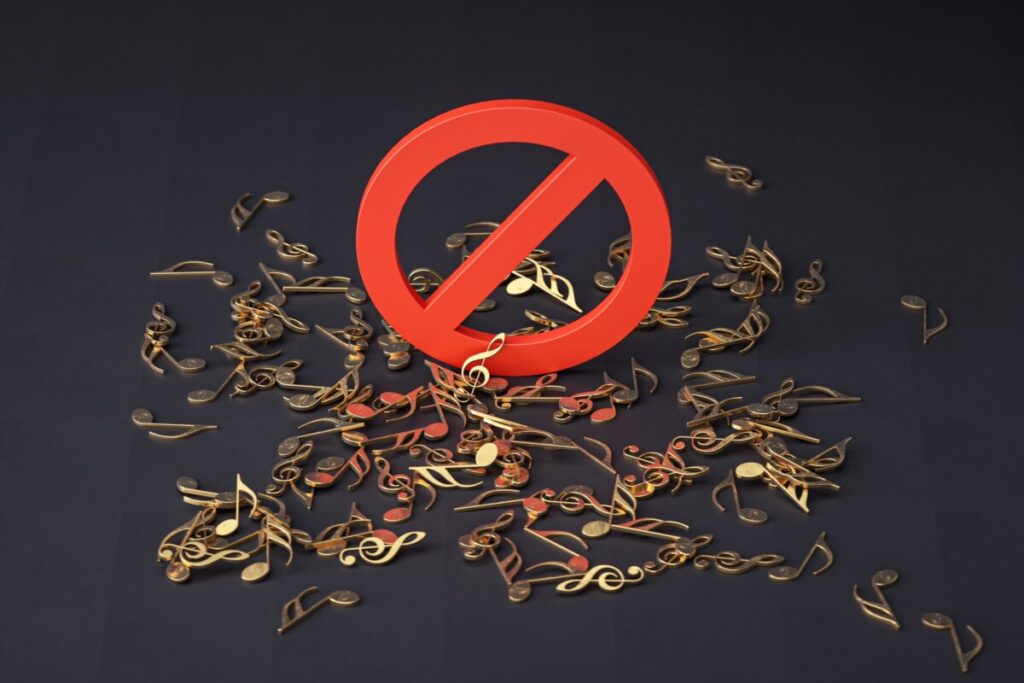Entry I
a) As a designer, most of us are well educated on what is copyright and how to attribute copyright ethically and lawfully. However, one’s client might not be familiar with the usage of copyright. It is the designer’s call to protect their stakeholder from violating the law and protect the artist’s rights. One chapter from the AIGA Business Ethics Handbook, Guide to Copyright, also emphasizes the importance of obtaining copyright. “Furthermore, an understanding of copyright is necessary if the designer is to obtain for the client appropriate licenses of copyright from suppliers such as photographers, illustrators, and authors.”

In the film production industry, one major copyright encounter often is music copyrighting. To legally use copyrighted music in a film or a video, one must obtain permission from the copyright owner. When I received my first project in my current internship, at an educational institution. I remember having a conversation with my supervisor who is also the director of our team, about using music in the video. Because the video project will be posted on YouTube, the direction is to use royalty-free production music from the Audio Library in YouTube Studio.
I was also advised on how to properly use the logo when putting it in the video. I received a branding guidebook, which includes logos, colors, fonts, and how to use them in projects. I wish there was a section to show examples of misuse of a logo. For example, a white logo should not be placed on a lighter-toned background for legibility. Or a logo should not be stretched when resizing.
b) Employee confidentiality or non-disclosure agreement signed between a company and an employee to protect ideas and information. If a confidential or non-disclosure agreement was signed, the employee cannot under any circumstance, with the exception of prior written approval, disclose company secrets. It is also created to protect ideas and information from being stolen or shared with others, especially its competitors. My internship site does not require a confidentiality or non-disclosure agreement. Because I am working in the marketing team in an educational institution. All my completed projects will be open to the public. However, I think it is important to have a confidentiality or non-disclosure agreement created when they outsource work to a freelancer. In case they have information that they want to keep confidential from the freelancer.
Citation:
- https://connecteam.com/templates/employee-confidentiality-agreement/
- https://corporatefinanceinstitute.com/resources/knowledge/other/non-disclosure-agreement-nda/
- https://www.aiga.org/sites/default/files/2021-03/Design-Business-and-Ethics.pdf
Entry II
a) After reading the AIGA Business Ethics Handbook, I understood the different types of copyright and how they protect the copyright holder’s rights. I’ve used many works from others, such as photographs, books, music, and illustrations. I was reminded to add credits to my work a couple of times by professors. And I was educated, even though we usually will not get in trouble for using others’ work in student work if we give credits.
By understanding business ethics, I recognized the importance of copyright. Without giving credit or asking permission from the artist, it could cause preventable problems. One consequence would be limiting job opportunities for an artist. Another would be violating the copyright law.
Take the famous street artist Shepard Fairey’s Hope poster as an example. He was sued for using AP freelancer Mannie Garcia’s photograph without permission. The consequence of not giving credit or asking permission is serious, you could be fined, sentenced to probation, or even imprisoned. Therefore, as one transitioning from a design student to a professional designer. They should always make sure to ask permission before using copyrighted work.
b) In the AIGA Business Ethics Handbook’s chapter, Guide to Copyright, the writer writes: “Fair use permits someone to use work without permission for a purpose that is basically not going to compete with or injure the market for the work, such as using a design in an article about the designer’s career.” I think it is essential to have fair use permits in the market. For instance, if without fair use, a book reviewer would need to ask permission from the copyright holder, in this case, it is the author and stakeholders, before using the content in the process of criticism. And the majority of copyright holders do not like to be criticized which leads to censorship.
However, a fair use permit somehow becomes an opportunity to copy, or even plagiarize someone else’s work. One of the famous copyright infringement cases is Rogers vs Koons. And Koons responded by claiming fair use by parody, but it was later rejected and forced to pay a monetary settlement to Rogers. Fair use permits should not be used for not taking credit for someone else’s work. It is stealing someone’s idea, time, and effort.
Citation:


